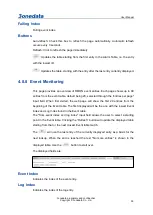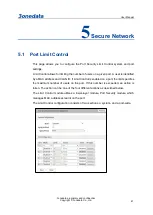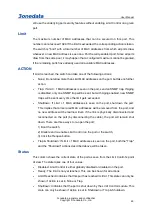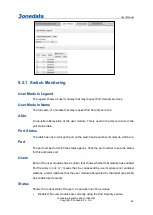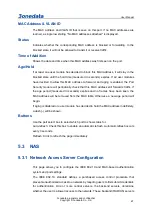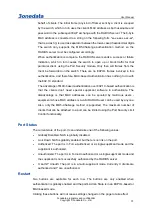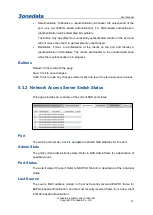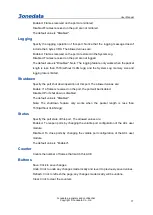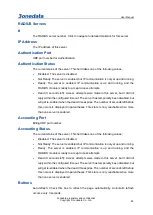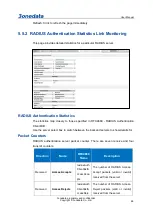
User Manual
3onedata proprietary and confidential
Copyright © 3onedata Co., Ltd.
72
comes up, and any client on the port will be disallowed network access.
Port-based 802.1X
In the 802.1X-world, the user is called the supplicant, the switch is the
authenticator, and the RADIUS server is the authentication server. The
authenticator acts as the man-in-the-middle, forwarding requests and responses
between the supplicant and the authentication server. Frames sent between the
supplicant and the switch are special 802.1X frames, known as EAPOL (EAP Over
LANs) frames. EAPOL frames encapsulate EAP PDUs (RFC3748). Frames sent
between the switch and the RADIUS server are RADIUS packets. RADIUS
packets also encapsulate EAP PDUs together with other attributes like the switch's
IP address, name, and the supplicant's port number on the switch. EAP is very
flexible, in that it allows for different authentication methods, like MD5-Challenge,
PEAP, and TLS. The important thing is that the authenticator (the switch) doesn't
need to know which authentication method the supplicant and the authentication
server are using, or how many information exchange frames are needed for a
particular method. The switch simply encapsulates the EAP part of the frame into
the relevant type (EAPOL or RADIUS) and forwards it.
When authentication is complete, the RADIUS server sends a special packet
containing a success or failure indication. Besides forwarding this decision to the
supplicant, the switch uses it to open up or block traffic on the switch port
connected to the supplicant.
Note: Suppose two backend servers are enabled and that the server timeout is
configured to X seconds (using the AAA configuration page), and suppose that the
first server in the list is currently down (but not considered dead). Now, if the
supplicant retransmits EAPOL Start frames at a rate faster than X seconds, then
it will never get authenticated, because the switch will cancel on-going backend
authentication server requests whenever it receives a new EAPOL Start frame
from the supplicant. And since the server hasn't yet failed (because the X seconds
haven't expired), the same server will be contacted upon the next backend
authentication server request from the switch. This scenario will loop forever.
Therefore, the server timeout should be smaller than the supplicant's EAPOL Start
frame retransmission rate.
MAC-based Auth.
Unlike port-based 802.1X, MAC-based authentication is not a standard, but
merely a best-practices method adopted by the industry. In MAC-based
authentication, users are called clients, and the switch acts as the supplicant on


